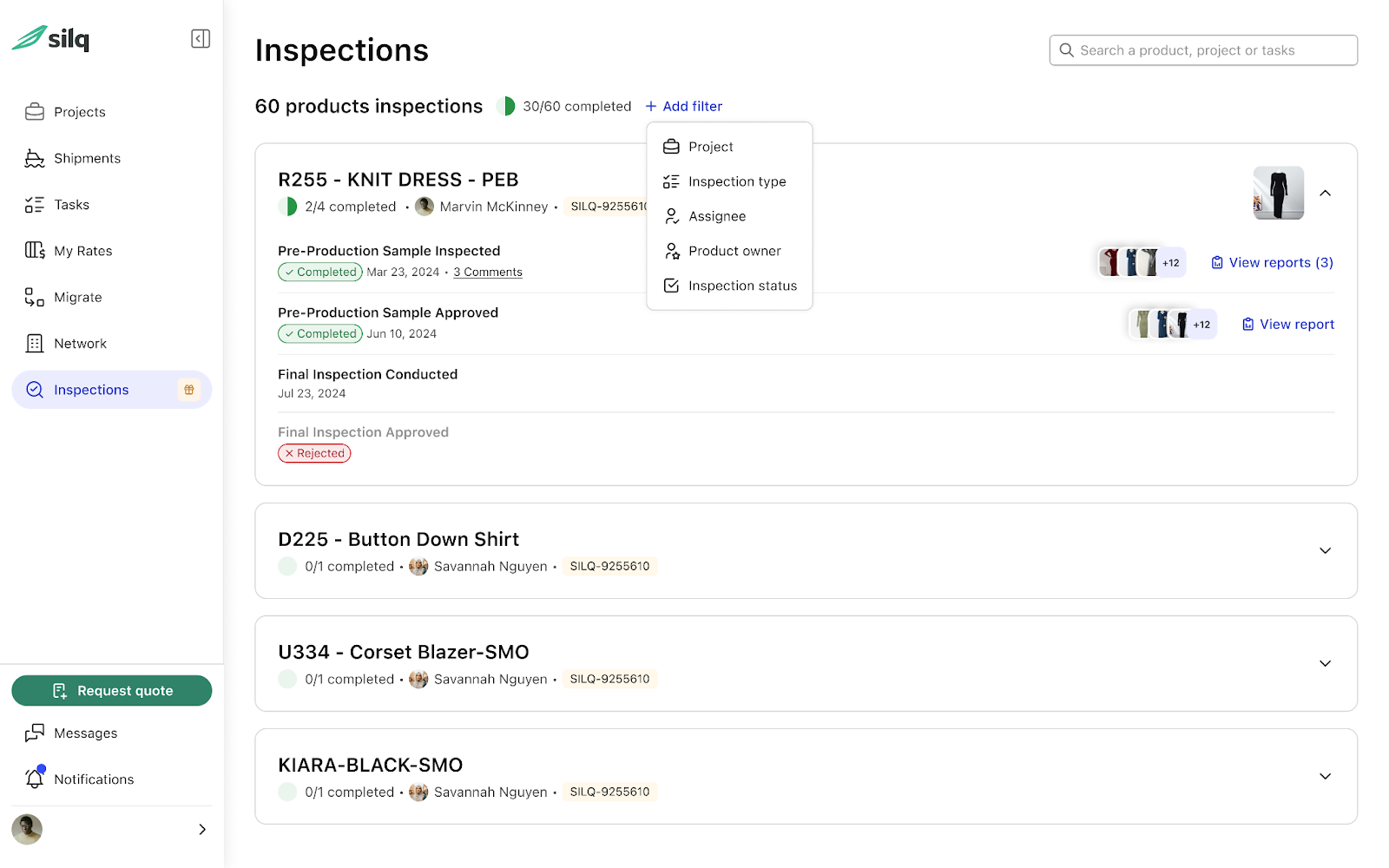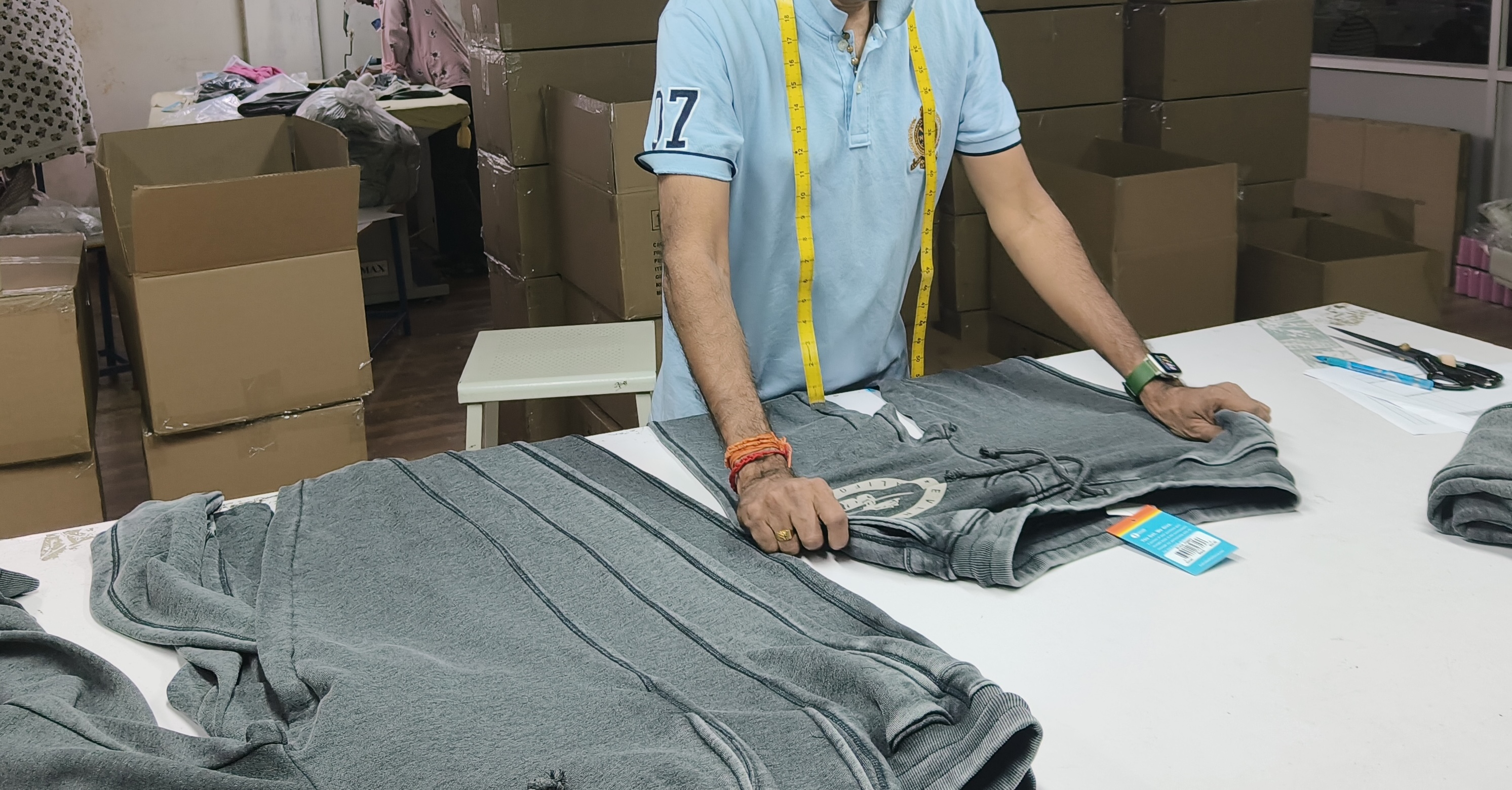Quality Control in the Supply Chain | Importer’s Playbook + Checklist

Let's be brutally honest: for an importer, quality control isn't a luxury; it's the bedrock of sustainable business. The moment goods leave the factory, they become a direct reflection of your brand. Skimp on QC, and you're not just risking a defective batch; you're risking everything.
This QC guide serves as your practical playbook for integrating quality management into the manufacturing process—from raw materials to finished products—so you can prevent defects, avoid rework, and ship on schedule. It’s written for importers who live in the real world: constrained time frames, tight pricing, and impatient stakeholders.
📥 Download the guide now.
Why QC Is Non-Negotiable for Importers
Regulatory pressure is rising fast. The U.S. CBP is collecting historically high tariff revenue and stepping up trade enforcement. That’s operational risk for importers who miss industry standards, label inaccurately, or can’t prove due diligence. By mid-2025, CBP reported $166.7B in duties, taxes, and fees collected year-to-date, a sharp step-up from recent years—evidence of intensified scrutiny and exposure if you get compliance wrong.
Forced-labor enforcement under UFLPA has also accelerated. CBP shows a sustained cadence of detentions and reviews, and industry trackers highlight 2025 detention volumes already surpassing full-year 2024, meaning your documentation, supplier vetting, and quality assurance checkpoints need to be airtight. (U.S. Customs and Border Protection)
You need a proactive approach to risk management that fuses QC, compliance, and logistics into a single operating rhythm.
What’s Inside the Playbook
Think of this QC playbook not as a dusty binder of rules, but as your ultimate secret weapon. It's the blueprint that ensures you get precisely what you ordered, every single time. It's the silent guardian protecting your reputation, your bottom line, and your peace of mind. Without it, you're playing a high-stakes game of chance with every container that leaves the factory floor.
This article is your executive walk-through; a teaser for the full Importer’s Quality Control Survival Guide.
1) QC = Margin Defense, Not a Line Item
Every return, rework, or replacement erodes contribution. Late discovery multiplies pain: overtime at the factory, emergency airfreight, retailer fines, and missed launch windows. Poor quality can consume operational or sales budget that can be reclaimed through process control, internal audits, and continuous improvement.
How to flip the script:
- Treat inspections as preventive actions, not a reactive expense.
- Build quality objectives into PO terms (materials, workmanship, labeling, packaging).
- Establish clear notification rules: specify when defects cross thresholds, who is responsible, and within what timeframe.
- Require corrective action and root cause analysis when a lot fails. Don’t ship until new test results verify the fix.
2) Compliance Without the Slowdown
CBP’s trade enforcement is growing. For importers, this translates into operational friction if they lack proof at the SKU level, including ingredient lists, country-of-origin evidence, forced-labor controls, and labeling accuracy.
Practical moves:
- Bake compliance checks into your on-site QC steps.
- Keep testing procedure evidence and certificates tied to POs and inspection reports.
- Align HTS with product functionality and construction.
3) AQL Demystified
AQL (Acceptable Quality Limit) is the maximum defect rate you’ll tolerate before a lot fails. It’s codified in ISO 2859-1 and underpins attribute sampling plans used worldwide.
- Luxury/high-end: very low tolerance (often 0 for critical, near-0 for major).
- Mass-market: slightly higher tolerance if pricing and end-users accept cosmetic variation.
- Safety/functional products: strict AQL (critical = 0) to meet industry standards and regulations.
Keys to doing it right:
- Define AQL and defect taxonomy (critical/major/minor) in the PO.
- If defects exceed limits, fail fast, then trigger corrective action with documented root cause and verification sampling.
Read More: AQL 2.5 Explained: What It Means for Your Quality Control Process
4) Your Inspection Cadence
A tight QC process depends on timing. This is the minimal cadence that prevents 80% of “how did this happen the week of ship?” escalations:
a) Pre-Production Inspection (PPI)
- When: before mass production starts
- Why: verify raw materials, trims, specs, and factory readiness.
- Win: defects don’t scale; first-time yield rises.
b) DUPRO / Inline
- When: 20-80% into production
- Why: catch systemic issues while there’s still time to course-correct.
- Win: cheaper fixes, fewer scrapped units, less rework.
c) Pre-Shipment / Final
- When: 80-100% complete and finished products packed
- Why: validate product quality, packaging, labeling, carton markings, and test results.
- Win: compliance proof before the goods hit the port.
Read More: Pre-Shipment Inspection Guide [Free Checklist Inside]
5) The Real Cost of Skipping Inspections
Skipping an inspection may look cost-saving, but it isn’t. The fix is cheaper than the fallout.
- Rework and remakes during peak capacity
- Emergency air to save a launch window (burns budget and margin)
- Retailer penalties and returns that cascade across channels
- Brand damage when end-users broadcast defects on social media
6) Real-Time Visibility
Traditional QC ends in static PDFs. Partners like Silq route inspection reports, photos, counts, and exceptions into a single, real-time dashboard alongside supply chain milestones. Digitization, automated alerts, and QC tied to logistics decisions consistently reduce delays and exceptions.

Ready to Go Deeper? Get the Guide
If you’re still treating quality control like a last-minute checkbox, you’re leaking margin. The Importer’s QC Survival Playbook gives you everything you need to flip that script:
- Battle-tested SOPs for every inspection stage
- Plug-and-play AQL templates by product type
- Corrective-action workflows you can deploy tomorrow
And if you’d rather skip the duct tape and see QC working in real time, Silq already does this for importers every day:
- Digitized inspection reports tied to each PO
- Real-time visibility from the factory floor to the warehouse door
- One platform where QC, compliance, and logistics sync automatically
Your next shipment can be smarter, faster, and risk-proofed. The first step? Grab the playbook. The second? See how Silq makes it all effortless.
Yes. A fashion tee ≠ a children’s toy ≠ a countertop appliance. Set tolerances by safety risk, price point, and brand promise, then encode them in POs.
Quarterly for new/high-risk suppliers; semiannual for stable lines.
DUPRO + immediate corrective action with verified root cause. Most chronic issues are process, not people—fix the method, tooling, or materials, then lock the preventive actions into SOPs.
Integrate inspection milestones with booking and ETD/ETA. When QC raises a red flag, the shipment should pause automatically. The operators who tie QC to movement decisions see fewer expedites and cleaner warehouse receiving.
Ready for Supply Chain Predictability?
Importers using Silq ship smarter, safer, and with total control.







